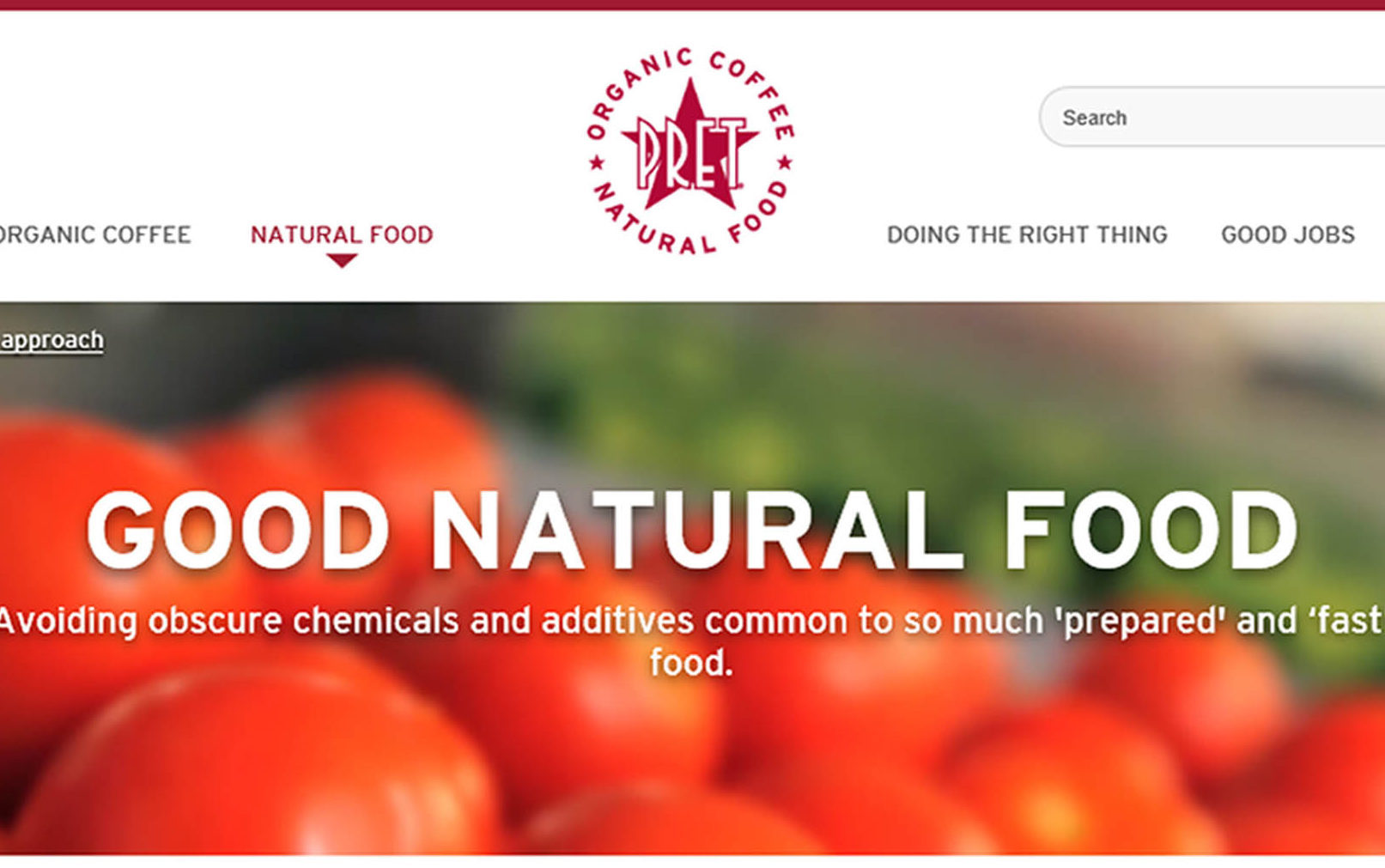
TWO ads for sandwich chain Pret A Manger have been banned for implying that its products are natural despite some containing artificial additives.
The food and farming charity Sustain complained that Pret’s website and Facebook claims that its products were natural and without “obscure chemicals” implied that its food was free from artificial additives.
Pret said its mission statement was to “create handmade, natural food, avoiding the obscure chemicals, additives and preservatives common to so much of the ‘prepared’ and ‘fast’ food on the market today”.
But it said Sustain had “mischaracterised” this as an “absolute, objective claim that Pret A Manger’s products contained only natural ingredients and were additive free”.
Pret told the Advertising Standards Authority (ASA) that the statement was “expressed as a ‘mission’ and was therefore an ideal state or their ultimate goal” and therefore “very different from a claim that Pret A Manger had arrived at that ideal state”.
It also said it only claimed to “avoid” as opposed to entirely eliminate “obscure” rather than all chemicals, additives and preservatives.
Pret confirmed that its sandwich bread contained three E-numbers: E472e (diacetyl tartaric acid esters of mono and diglycerides), E471 (mono and diglycerides of fatty acids) and E300 (ascorbic acid).
It said E472e was used to strengthen the dough and reduce the number of large holes in the bread, E471 was used to soften the crumb, and E300 was Vitamin C, and believed all were widely used in the industry to make sandwich bread.
The ASA said consumers were likely to interpret the claims to mean that Pret’s foods were natural as they did not contain obscure chemicals, additives and preservatives.
It said: “We concluded that because the ads contained some claims that Pret A Manger’s food was ‘natural’ when some products contained artificial additives, those claims were misleading and breached the Code.”
It ruled that the two ads must not appear again and told Pret “to ensure their ads did not claim or imply that their food was ‘natural’ unless their products and ingredients were in line with consumer expectations of the term ‘natural”‘.
Clare Clough, food and coffee director at Pret, said: “We do, of course, take on board the views of the ASA and have already made the requested changes.
“We cherish the relationship we have with our customers. We believe we represent Pret’s food honestly and we always welcome feedback.”
Chris Young, the coordinator of Sustain’s Real Bread Campaign, said: “We welcome this ban, which sets a precedent that sends a clear message to food companies that unless they walk the natural food walk, it’s misleading to talk the natural food talk.”

Enjoy the convenience of having The Sunday Post delivered as a digital ePaper straight to your smartphone, tablet or computer.
Subscribe for only £5.49 a month and enjoy all the benefits of the printed paper as a digital replica.
Subscribe